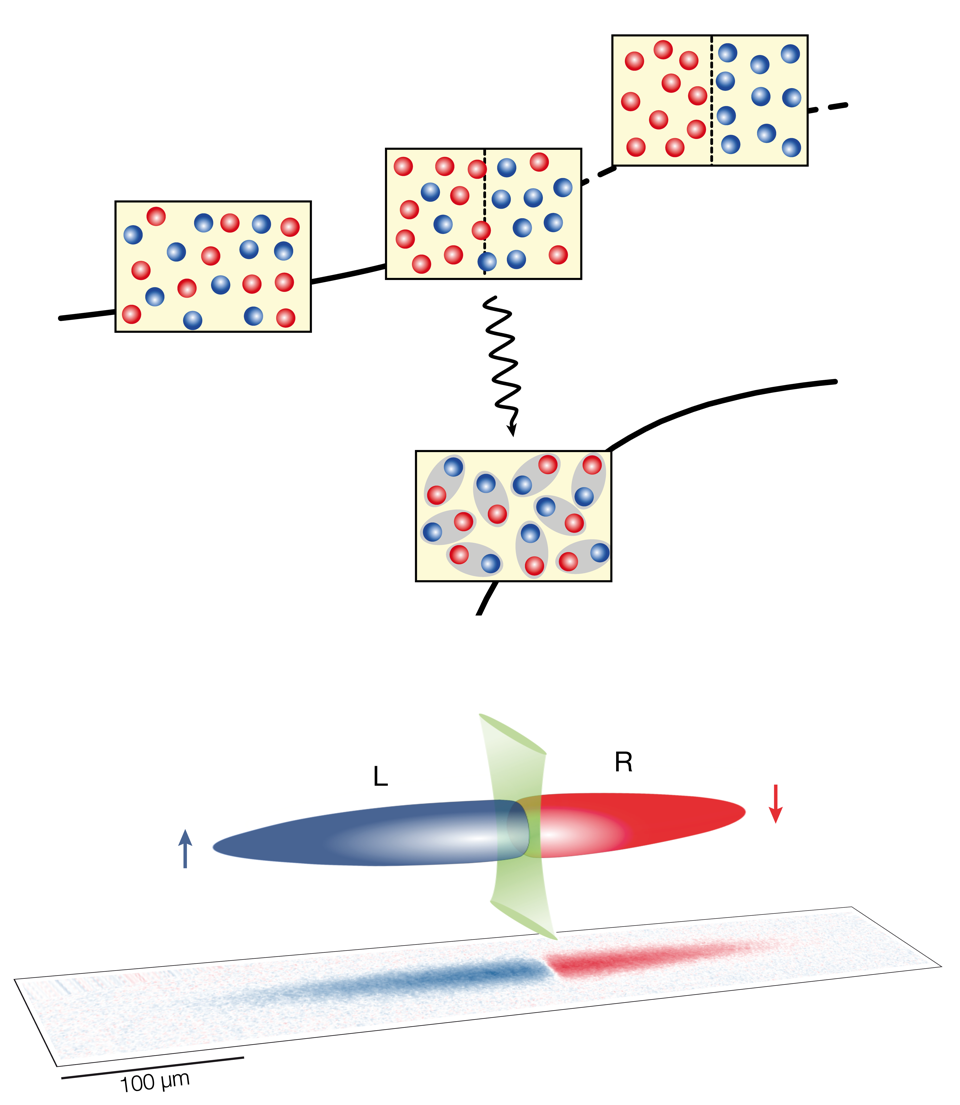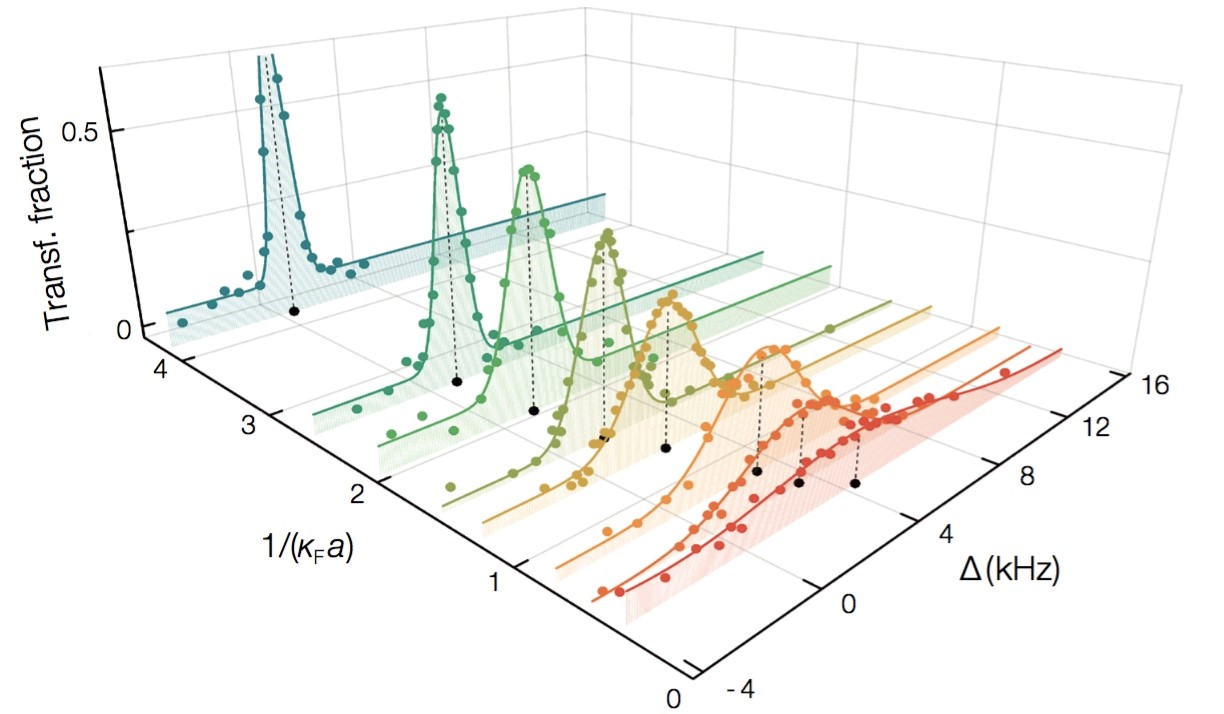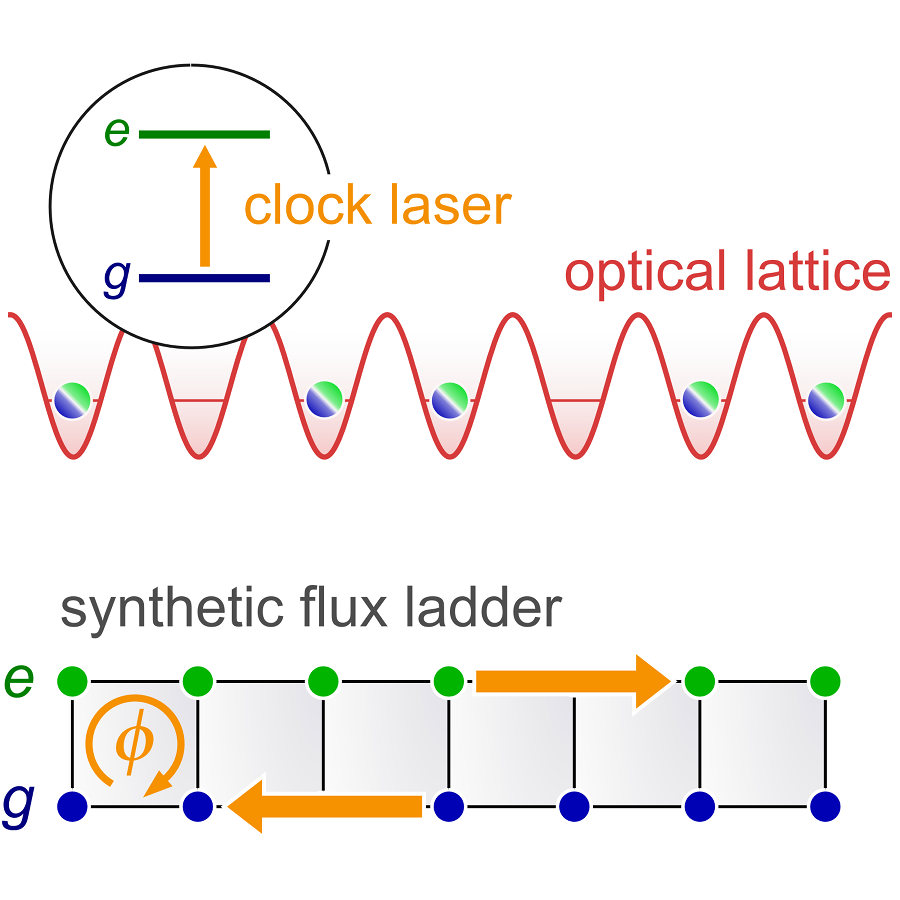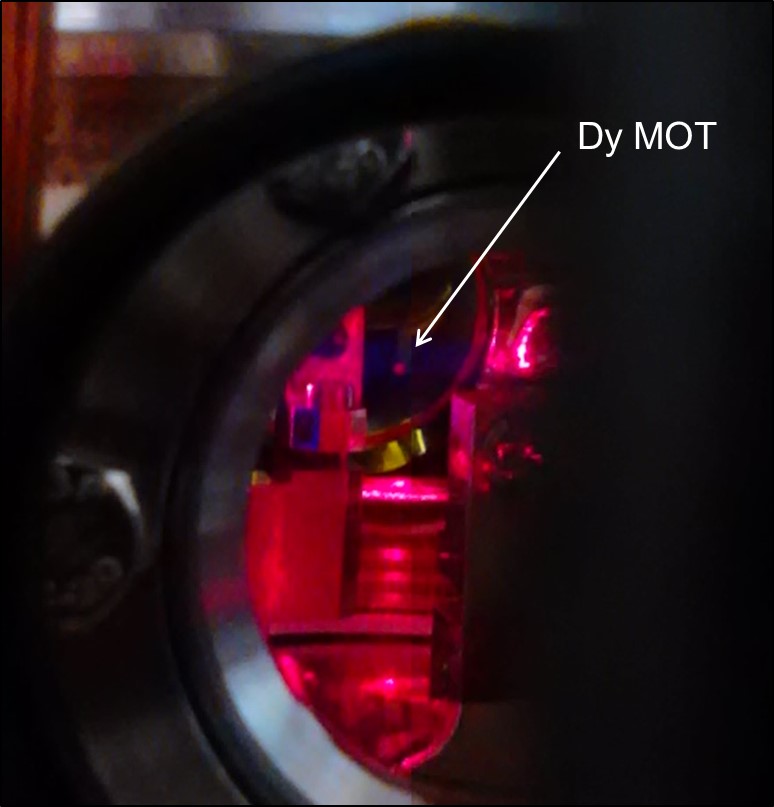 |
We study the collective spin response and spin diffusion of an ultracold lithium Fermi gas artificially engineered in a fully ferromagnetic state, obtained by spatially segregating oppositely-oriented spins into two adjacent reservoirs. In this way, we show that strong repulsive interactions are sufficient to temporarily stabilize ferromagnetic correlations in a Fermi mixture. In particular, we reveal a substantial increase of the magnetic susceptibility of the gas while approaching the critical value of interaction. Correspondingly, we show that above the critical interaction a spin up-down domain wall can persist for a finite time, indicating the metastability of the ferromagnetic state. Such findings point to Stoner-like ferromagnetic instability driven only by short-range repulsion, and are consistent with our recent study of a repulsive Fermi liquid of polarons in strongly polarized Fermi gases. G. Valtolina, et al., |
LAST NEWS
 |
We are pleased to announce the workshop of the EU project QUIC (Quantum Simulations of Insulators and Conductors) which will take place at LENS on April, 20th and 21st. The talks will be open and there will be time for lab visits and scientific discussions for everyone interested, not only for the QUIC team members. A detailed program of event can be found here |
 |
Landau was first to suggest that collective excitations of particle ensembles could be treated as if they were particles themselves, with properties like momentum and mass. As such, these excitations are known as quasiparticles, and in contrast to free particles they possess a finite lifetime. In this study, we report on the investigation of a particular type of quasiparticle known as a Fermi polaron. This is a quantum impurity that is immersed in a Fermi sea and strongly interacts with it. In particular, Fermi polarons emerging from impurities repelling the surrounding particles are known as repulsive polarons. We could observe well-defined repulsive polarons even at very strong interactions, with impurities possessing the same mass as the surrounding particles. In such a system the existence of long-lived repulsive polarons was thus far debated. For this, we have spectroscopically probed an ultracold Fermi gas of lithium, where atoms in a specific internal spin state acted the role of the impurities interacting with a bath of atoms in another spin state. Our findings offer exciting prospects for studying many-body states that rely on repulsive interactions. F. Scazza, et al., |
 |
We demonstrate a novel way of synthesizing spin-orbit interactions in ultracold quantum gases, based on a single-photon optical clock transition coupling two long-lived electronic states of two-electron 173Yb atoms. By mapping the electronic states onto effective sites along a synthetic “electronic” dimension, we have engineered fermionic ladders with synthetic magnetic flux in an experimental configuration that has allowed us to achieve uniform fluxes on a lattice with minimal requirements and unprecedented tunability. We have detected the spin-orbit coupling with fiber-link-enhanced clock spectroscopy and directly measured the emergence of chiral edge currents, probing them as a function of the flux. These results open new directions for the investigation of topological states of matter with ultracold atomic gases. L. F. Livi et al., |
 |
We realize a magneto-optical trap for 162Dy atoms on the intermediate linewidth transition at 626 nm. We trap over 2✕108 atoms at temperatures as low as 20 μK in 5 seconds. We observe the best loading at large detuning, -35Γ. Under these operating conditions, MOT forms below the quadrupole centre and the MOT light acts as optical pumping as well. E. Lucioni et al. |
